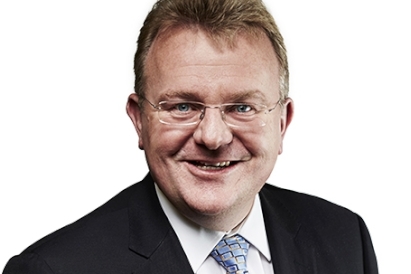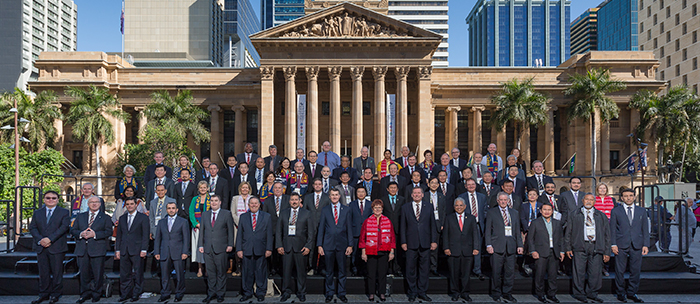THE Australian Small Business and Family Enterprise Ombudsman, Bruce Billson said the Federal Government’s 2021 Budget was a clear acknowledgement that small and family businesses are central to the nation’s economic recovery and future prosperity.
He highlighted several new, extended and enhanced measures in the Budget to support small businesses.
The ASBFEO list includes:
- $129.8 million to encourage entrepreneurship through the New Enterprise Incentive Scheme (NEIS) and Entrepreneurship Facilitators Program;
- $1.2 billion investment in the digital economy;
- $10 billion guarantee of reinsurance pool to cover cyclone and flood damage across Northern Australia;
- $506 million extension of federal government’s JobTrainer program;
- $10 million over four years on small business deregulation agenda;
- $11 million over three years for national recognition of occupation licences;
- Tax system reform for small business;
- $4.3 million to establish the Mandatory Franchise Disclosure Registry;
- $2.6 million to improve access and awareness of Commonwealth procurement opportunities.
“Tonight’s budget represents a substantial financial and strategic commitment to making Australia the best place to start, grow and transform a business,” Mr Billson said. 
“These measures will support small and family businesses as they help lead our national economic recovery and play a critical role in securing our future prosperity.”
Encouraging Entrepreneurship
The Federal Government will spend $129.8 million on consolidating and expanding small business and entrepreneurial services to support people who want to start, run and grow their own business.
“This initiative will help put the wind in the sails of fledgling small businesses and encourage the Australian entrepreneurial spirit,” Mr Billson said.
“The number of New Enterprise Incentive Scheme (NEIS) places will lift from 8,600 to 12,000 per year for people looking to create their own start-up livelihoods.
“It will also support existing micro-businesses to adjust to changing labour market conditions to ensure these businesses remain viable and resilient to changes in the face of turbulent trading conditions.”
Digital Economy Strategy
The Federal Government has pledged $1.2 billion towards enhancing the digital economy, including a 30 percent tax offset for the video game industry.
“This $1.2 billion investment will encourage greater digital adoption by small and family businesses, to ensure they are globally competitive,” Mr Billson said.
“We welcome the Australian government’s commitment to help SMEs build their digital capacity and drive business up-take of e-invoicing.
“With 1.2 billion invoices exchanged in Australia every year, making the switch to e-invoicing would add an estimated $28 billion to the Australian economy over 10 years. For SMEs, we know e-invoicing streamlines productivity and improves cash flow with reduced admin and faster payments.”
“$12.7 million will be spent on expanding the Australian Small Business Advisory Service Digital Solutions program to reach as many as 17,000 small businesses.”
Mr Billson particularly welcomed the support provided to the Australian video game industry, which is comprised of many high growth potential small businesses and start-ups.
“My office has been a vocal supporter of the Interactive Games and Entertainment Association (IGEA) which estimates Australia could create a $1 billion industry in game development, providing export revenue and employing an additional 10,000 full time workers with the right support,” Mr Billson said.
“This 30 percent tax offset is an excellent support measure to help Australian video game producers take a greater share of the $250 billion global game development market.”
Insurance
Mr Billson welcomed plans for a reinsurance pool to be backed by a $10 billion Australian Government guarantee to cover cyclone and flood damage across Northern Australia from July 1, 2022.
He said the scheme, which is broadly in line with a recommendation in ASBFEO’s Insurance Inquiry, will make a significant difference.
“This is certainly a welcome step in the right direction when it comes to ensuring essential insurance coverage is accessible to small businesses,” Mr Billson said.
“Our Insurance Inquiry revealed that too many small businesses have been crippled by rising insurance costs and some can’t get it at all.
“A reinsurance pool will go some way to addressing this key barrier for small businesses in Northern Australia.”
Mr Billson says he also recognises barriers still exist for SME insurance coverage in other parts of Australia.
“In the course of our Insurance Inquiry, we spoke to over 800 small businesses – about 12% of those were from Northern Australia,” Mr Billson says.
“That means there are still many small businesses out there experiencing difficulties with accessing necessary and affordable insurance coverage.
“My office is ready and willing to work collaboratively with the government, relevant agencies and the insurance industry towards making essential insurance products affordable and accessible for small businesses across the country.”
JobTrainer
The JobTrainer program will be extended for another 12 months, as part of a $506 million package to support SMEs to employ apprentices and trainees with a 50 percent wage subsidy of up to $28,000 per year.
“JobTrainer has proven to be a highly effective incentive for SMEs to take on new apprentices and trainees,” Mr Billson said.
“The cost of apprentices and trainees can be significant as they learn the ropes, so small businesses will welcome the extension of this wage subsidy.
“JobTrainer will also offer thousands of young Australians low-fee or free courses – critically in fields where small businesses are struggling to find staff.”
Deregulation Agenda
The Federal Government will spend $134 million over four years on its deregulation agenda, including investing in regulatory technology (regtech) to support smaller employers comply with modern awards, provide data on pay and conditions and help with accuracy in payroll software.
“Small business owners are hard-working, time-poor and don’t have the systems or resources needed to deal with onerous compliance requirements,” Mr Billson said.
“Research shows a small business hiring its first worker can spend up to 18 hours getting their head around awards, pay rates, tax, OH&S and record-keeping obligations.
“This government investment in ‘regtech’ is a positive step towards making it easier for small businesses to pay wages and entitlements correctly and on time, recognising how much they value their team.”
$11 million will be invested in the implementation of automatic mutual recognition of occupation licences across states and territories.
“This will help small business tradespeople who want to meet the demand for their skills in different areas of the country,” Mr Billson said.
Tax system reform
Small businesses in dispute with the ATO will get a fairer go, under new rules proposed in the Budget.
Mr Billson welcomed the pledge to give the Administrative Appeals Tribunal (AAT) greater powers to pause or change debt recovery actions applying to a small business in dispute with the ATO.
“Small businesses disputing an ATO debt in the AAT will get a fairer go by stopping the ATO from relentlessly pushing on with debt recovery actions against a small business, while the case is being heard,” Mr Billson said.
“I commend the government which has acted quickly to implement a key recommendation in our recently released report: A tax system that works for small business which will allow small businesses to pause ATO debt recovery actions until their case is resolved by the AAT.
“Currently, small businesses are only able to pause or modify ATO debt recovery actions through the court system. This can be prohibitively expensive and time consuming for a small business.
“Under the proposed changes, small businesses can save thousands of dollars in legal fees, not to mention up to two months waiting for a ruling.
“In line with our recommendation, the AAT will be able to pause or modify ATO debt recovery actions, such as garnishee notices, interest charges and other penalties until the dispute is resolved.
“It means that rather than spending time and money fighting in court, small business owners can get on with what they do best – running and growing their business.”
Employee Share Scheme
The Government will help Australian businesses to attract and retain staff by removing cessation of employment as a taxing point for the tax-deferred Employee Share Scheme (ESS) and reducing red tape for ESS.
Instant Asset Write-Off
Small businesses can continue to write-off the full value of assets purchased until 2023.
“This one year extension of the uncapped instant asset write-off is a big win for small businesses,” Mr Billson said.
“It gives small businesses more time and certainty to plan and buy major equipment. It significantly reduces the need for depreciation and cuts red tape.”
Loss Carry Back
“The loss carry back provision will also be extended to June 2023,” Mr Billson said.
“This is a tax initiative that effectively allows a small business to carry back tax losses from 2022/23 income year to offset previously taxed profits as far back as 2018/19, to support business recovery.”
Payment times
The Government is committing an additional $16 million to ensure effective implementation of the Payment Times Reporting Scheme, which has been in effect since 1 January, 2021.
“This reporting framework requires big business to be upfront and honest about the time it takes to pay their small business suppliers,” Mr Billson said.
“Cash flow is king for small business and we know that if small businesses are paid on time, the whole economy benefits. AlphaBeta estimates if large businesses pay small businesses in 30 days, the net benefit to the economy is $313 million per year.”
Mandatory Franchise Disclosure Registry
A Franchise Disclosure Registry is set to be established at a cost of $4.3 million. The registry will require franchisors to lodge disclosure documentation about their franchise annually.
“This is about improving transparency of franchise operations and providing prospective franchisees with vital information they need before entering into a franchise agreement,” Mr Billson said.
“My office has advocated for the implementation of this registry as a key component of effective due diligence all prospective franchisees should undertake before entering into a franchise agreement.”
SME procurement
The Australian Government will provide $2.6 million over four years to support and strengthen SME participation in procurement, including mapping common pain points for SMEs.
www.asbfeo.gov.au
ends










